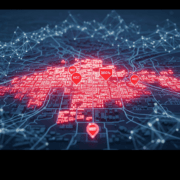What is Big Data Analytics in Forensic Science?
Big Data Analytics is the advanced process of examining extremely large and complex datasets—known as “big data”—to uncover hidden patterns, unknown correlations, and other critical insights. In a forensic context, it involves using powerful software and computing systems to sift through massive amounts of information to find digital evidence that would be impossible for a human to find manually in a timely manner.
Understanding Big Data
The concept of “big data” is often defined by the “Three Vs”:
- Volume: The sheer scale of data being generated and stored, often measured in terabytes or petabytes.
- Velocity: The high speed at which new data is created and needs to be processed.
- Variety: The different types of data being analyzed, from structured financial records to unstructured data like emails, social media posts, videos, and images.
Applications in Forensic Investigations
Big Data Analytics has become a game-changer for investigating complex, data-heavy crimes:
- Financial Crime and Fraud Detection: Investigators analyze millions of credit card transactions, bank transfers, and insurance claims to identify anomalous patterns that are indicative of money laundering, fraud schemes, or terrorist financing.
- Digital Forensics & Cybersecurity: When investigating a data breach or seizing a server, analysts use big data techniques to process terabytes of information from hard drives and network logs to trace a hacker’s activity or recover fragments of deleted files.
- Pattern Recognition: Law enforcement agencies can analyze years of crime reports to identify patterns, such as a criminal’s modus operandi (MO) or predict emerging crime “hot spots.”
- Open-Source Intelligence (OSINT): Analysts sift through vast quantities of publicly available information from social media, forums, and the dark web to gather intelligence and build profiles on suspects or criminal organizations.
Challenges and Tools
The primary challenge of big data analytics is that it requires specialized skills and powerful computing infrastructure. The process is made possible by technologies like machine learning, artificial intelligence (AI), and distributed computing platforms that can process data across many servers simultaneously.





